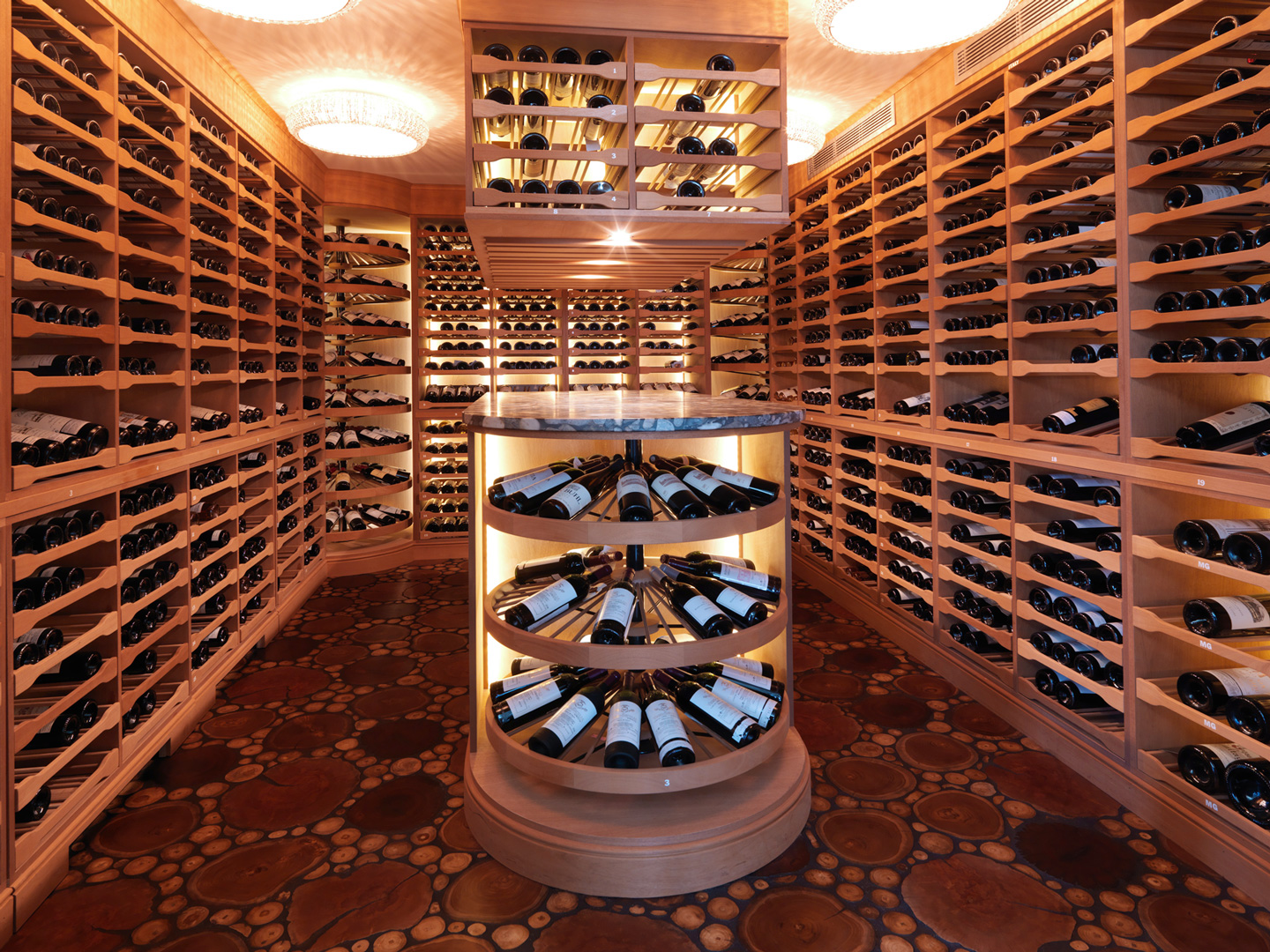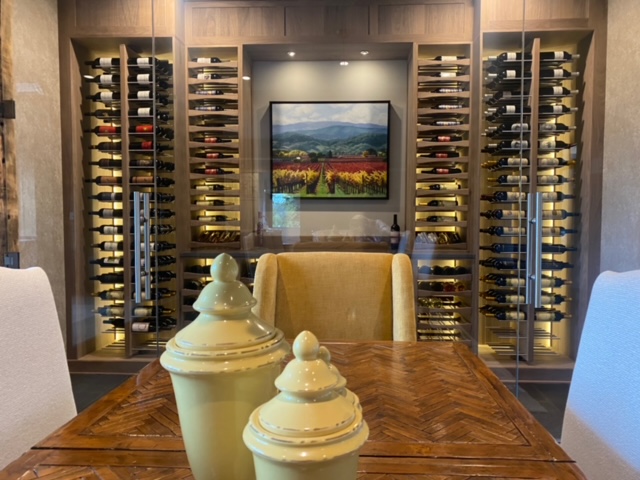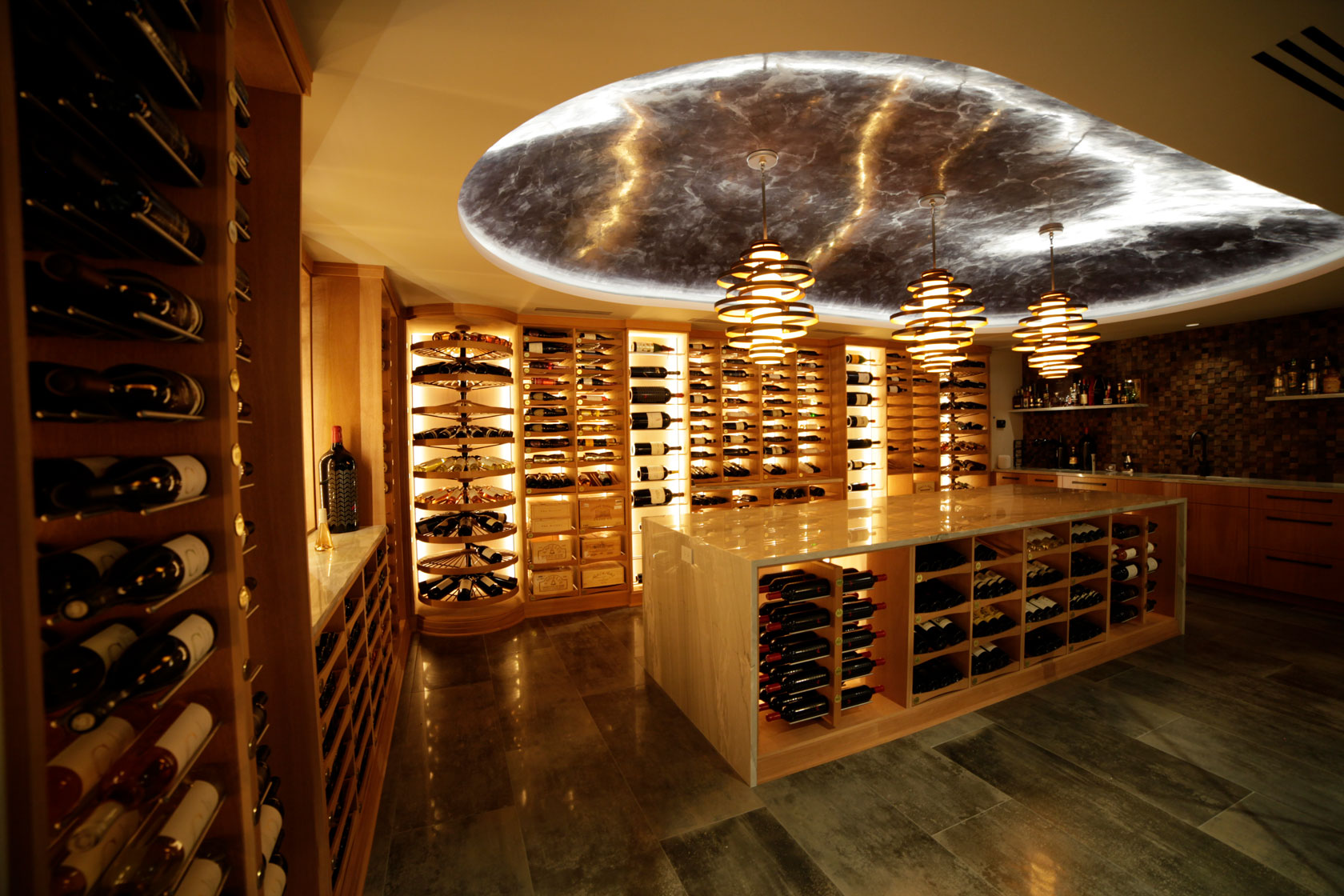We don’t believe in “right or wrong” when it comes to designing wine cellars, because a design has to respond to a perceived need and this can be done in any number of ways. We believe in design excellence and that, of course, is the goal to which Revel Custom Wine Cellars, and most other designers, aspire.
Jim Cash started Revel Custom Wine Cellars based on ideas developed designing his personal wine cellar. With no formal training or experience with design of any kind – he was in real estate and commercial construction, but his passion was wine. He didn’t like wine “racks” because they hid the wine, and he wanted to see all the wine.
Jim started by studying the shapes and sizes of wine bottles and wood wine boxes. He developed new designs that allowed him to see the wine and peruse his collection without handling bottles. At no point did he ever consider aesthetics – just functionality. Eventually, these concepts formed somewhat of an ecosystem of inter-related components (seven of which are patented) and all of which are from the original creations. Collectively, the goal is to make the wine the star of the show, both functionally and visually.
It is a very simple philosophy, but it drives every detail of everything we do with our designs, and then by extension, everything we do with the business. The first wine cellar we ever sold ended up being featured in a full-page Wine Spectator Magazine article, and later, Forbes dubbed us “The World’s Best Wine Cellars.”
Our cellars have been featured in dozens of other magazines, have been shipped all around the world, and are owned by some of the most prominent collectors, wineries, clubs and resorts. If we have achieved excellence in design, it comes from our passion. While most designers start with things like color palettes, materials, finishes, etc., and then add racking to fit the room, we start with the wine and work backwards from there.
Here is a short list of guidelines we follow:
Seating
Don’t put seating in a wine cellar. It’s 55 degrees and uncomfortable. If you want to share your collection with others, put some glass in the front and create a tasting area with views into the cellar, where you can enjoy your wine and your collection in comfort.

Glass
Customers love having glass entry doors and front walls to create views into the cellar from outside. This is also challenging to a designer because it can limit the ability to use that space for wine storage. It also affects the thermal efficiency of the room. We’ve developed systems to address this challenge. Regardless of your choice of designer, this is something that deserves careful consideration.

Case Storage
The original wood boxes that many collectable wines come in are great to display, and they also help to preserve the value of the wine. Store them below counter height so you aren’t having to lift them up over your head.

Large Format Bottles (3L+)
These are bottles that generally don’t get handled often, so we’ve found that creating space for them around the perimeter at the ceiling works well. Looks good and makes use of space that’s hard to reach for regular sized bottles.

Counter Area
We always recommend some space to lay down a case or open a bottle and pour a glass – even if there is a bar area just outside. You sacrifice a little in terms of capacity, but it comes in handy in many ways.

Sinks, Refrigerators, etc.
Don’t put these in your cellar. Refrigerators generate heat and work against the main cooling system, and don’t improve the wine aging process. Use your precious space for wine. Cooling Systems When possible, use fully ducted cooling systems to avoid mechanical apparatus that needs to hang on a wall inside the cellar. This will look better, perform better, and improve overall storage capacity.

Cellar Location
It no longer needs to be stuck in the back corner of a basement. Collectors enjoy sharing wine with friends and colleagues, so consider traffic patterns, adjacencies and social activities when choosing a location. Features such as case storage pullouts and dedicated shelving for large format bottles allow all types of bottles to be stored. A handy countertop area allows you to uncork a bottle, or set items down as needed.

Focal Point
When you look into the cellar from the outside, or as you enter the cellar from the doorway, there is usually a spot on the back wall that your eye is initially drawn to. This will form the first impression. When envisioning the design, it often works well to start from there and work outwards.

Lighting
Light is generally not good for wine, but if you want to be able to see the wine, you need some. Low voltage LED lighting built into the backs of the cabinets, set up on a dimmer creates the visibility, lasts almost forever, uses very little energy, generates very little heat and does no harm to the wine.

Density
A large, ornate room with just a few bottles scattered sparsely on the walls screams of a lack of wine appreciation. Conversely, overcrowding the room isn’t good either. It is a good idea to balance the cost of the room, with the value of the collection, and the number of bottles. Additionally, most local building codes have requirements for minimum circulation space.

Finishes
We like to avoid chemical stains, lacquers, varnishes, paints or urethanes in wine cellars in order to promote indoor air quality and make sure no off-gassing will ever affect the wine. We also love the look of fine cabinetry in the nude!

So that’s our “recipe.” The secret sauce is in helping our clients to make it their own (hint – listen!)
